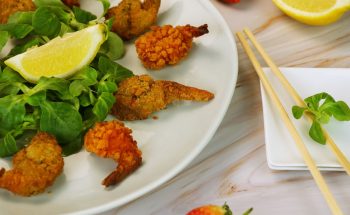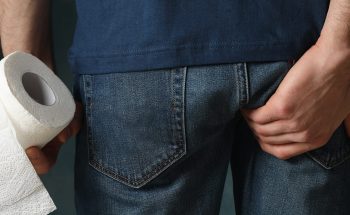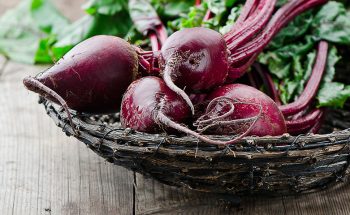Clarity in wine has always been a promise. It signals care in the cellar, stability in the bottle and a steady hand at release. For a growing number of drinkers, that promise now carries a second demand. They want clarity in process as well as in appearance. Vegan wine sits at the centre of this shift. It rejects animal-derived fining agents and pushes producers to rely on gravity, time and mineral science. To some, that looks like a radical new idea. In truth, it is a return to older methods that predate industrial shortcuts.
This long-form guide explores how ancient clarification techniques are being re-adopted by minimal-intervention and natural wine producers, and why these choices matter to sommeliers, researchers and curious drinkers. It explains what fining does, where egg white and isinglass came from, and how methods such as racking, winter cold and bentonite clay can deliver clarity without compromising ethics. It shows how these decisions shape texture and aroma. It also offers practical advice on labels, certification and buying for service.
The point is not to pit old against new. This shows that the most reliable path to purity often begins with patience. The cellar that resists speed finds different rewards. Settling reveals itself as a craft. Clarification becomes a sequence of modest steps rather than a single additive. The result can be wines that feel fuller on the palate, carry more of their place and require fewer interventions to travel well.
The historical gold standard time, gravity and clay
Before laboratories, fast-acting proteins, and high-pressure filters, wineries leaned on seasonal rhythms and simple physics. Fermentations finished in autumn. Winter dropped the temperature in stone cellars. Spring offered the first chance to move the wine off its sediment. Across the year, a combination of cold, stillness and gentle transfers produced brightness that endured.
The art of racking and gravity settling
Racking is the quiet engine of traditional clarity. After fermentation, wine is a cloudy suspension of yeast remains, grape solids and unstable proteins. Left undisturbed in a cool space, those particles aggregate and sink. A compact layer forms at the bottom of a cask or tank. The clear liquid above is then drawn off into a clean vessel. The action is repeated as the wine continues to settle.
Producers who took the time thoughtfully planned several rackings across the first 12 to 24 months. Winter helped. Cold cellar air encouraged tartrate crystals to fall out of solution. As these crystals formed, they dragged other fine particles with them. Each transfer delivered a cleaner wine without stripping flavour compounds. The method demanded patience and precise timing, but it required no animal input and left the structure intact.
Fun fact: Many nineteenth-century estates scheduled racking on waning moons, believing the lower barometric pressure and calmer liquids made sediment settle more firmly. Whether superstition or astute observation, the practice placed gravity at the heart of cellar routine.
Earth’s gift, the original vegan fining agents
When gravity needed assistance, the earliest additives were minerals. Finely milled clays and earths were mixed into the wine, allowed to bind haze-forming proteins, then left to settle. The most influential of these materials is bentonite clay. Its plate-like particles carry a negative charge that attracts and immobilises positively charged proteins. Once bound, these complexes become heavy enough to drop out, leaving the liquid protein stable.
This is not a new trick adapted to modern tastes. It is a heritage method that later generations refined with better dosing and hydration practices. Bentonite’s success underpins a key insight. Clarification can be physical and reversible, with no animal content and minimal collateral effects when handled with care.
The industrial detour: why egg whites and isinglass took over
As wine shifted from a local staple to a global commodity, two pressures remade the cellar. Producers needed to release wines faster, and international markets demanded visual gloss. Extended ageing tied up tanks and cash. Haze and sediment, once understood as part of a living product, became signals of fault to distant buyers and importers. Animal proteins offered speed and polish.
Speed scale and the pursuit of brilliance
Two agents dominated the era of fast financing. Egg albumen delivered quick softening of coarse tannins in red wines. It is positively charged and binds to larger, more astringent phenolics, which then settle with routine racking. In classic regions such as Bordeaux, barrel fining with fresh egg white became a standard step before bottling.
Isinglass, a collagen derived from fish swim bladders, proved highly effective in delicate whites. It excels at producing sparkle-clear finishes by bonding with residual yeast and fine colloids. Wineries could present bright, export-ready wines in a fraction of the time required for gravity alone.
The trade-off was not only ethical. Protein fining is not fully selective. It can remove flavour precursors, narrow texture, and mute some aromatic nuance if overdone or poorly controlled. Industrial consistency improved predictability, but it also nudged many cellars toward a single aesthetic that valued glassy polish above breadth.
The minimalist toolkit: modern vegan and natural techniques
A growing number of producers have stepped off that track. Their approach is both principled and practical. It seeks stability without animal inputs, and it values the sensory gains that come with restraint.
The unfined and unfiltered manifesto
Unfined wines avoid all fining agents. Unfiltered wines avoid mechanical removal of fine particles at bottling. Together, these choices push responsibility upstream. Producers invest in clean ferments, gentle pressing and longer élevage. They use careful racking schedules and avoid unnecessary agitation. They accept that a slight haze or a natural deposit in the bottle is not a fault. For many customers, it reads as a sign of minimal processing.
There are limits. Certain whites, mainly from warmer sites, can be protein-unstable even after lengthy settling. In those cases, a vegan step earns its keep.
Bentonite clay: the timeless mineral solution
Bentonite remains the workhorse of vegan clarification. It is abundant, neutral and practical. Success rests on method. Cellars run bench trials to determine the lowest dose needed for stability. The clay is hydrated in water to create a slurry, then thoroughly mixed to avoid clumping. After contact time, the wine is left to settle and is racked cleanly.
Used thoughtfully, bentonite delivers stability while preserving aroma and mouthfeel. Overuse can drag down aromatic intensity, so disciplined dosing is essential. Many producers combine modest bentonite additions with gravity to keep intervention low.
Plant-based proteins are a targeted option
Where structure needs finesse, plant proteins from pea or potato provide a vegan route to moderating grip in reds and refining phenolics in whites and rosés. These products mimic the action of egg white on specific tannin fractions but avoid animal inputs and common allergens. As always, small-scale trials define effective dose and contact time. The objective is texture that feels shaped, not stripped.
Filtration clarity without heavy-handedness
Filtration is a tool, not a verdict on philosophy. Modern cross-flow filtration moves wine tangentially across a membrane. This keeps pressure modest and reduces fouling, which helps preserve aroma and texture. The method is additive-free and can secure microbial stability ahead of bottling. Decisions about membrane cut-off, temperature and timing determine impact. In many cellars, cross-flow replaces aggressive pad filtration and allows producers to avoid protein fining altogether.
What clarification changes in the glass
Understanding what is gained and what may be lost helps buyers and drinkers set expectations.
Structure and mouthfeel
Wine texture depends on a web of colloids, polysaccharides and fine lees components. Heavy protein fining can remove some of these materials along with the intended targets. Unfined or minimally fined wines often feel broader and more layered as a result. Gentle gravity settling preserves those micro-elements, which translate as silkier mid-palates and more natural weight.
Aroma and nuance
Aromatics rely on volatile molecules and their precursors. Over-fining can dull the lift and narrow the spectrum of scents. Time and cool temperatures allow reduction of instability without sweeping away delicate compounds. Cross flow, when used with restraint, can tidy haze and microbial load while maintaining aromatic detail. The difference in the glass is not subtle. Wines clarified by patience often show deeper resonance and a longer, truer finish.
Appearance and expectation
A perfectly bright appearance is not the only marker of quality. Slight haze or a light deposit is familiar in unfined bottles and does not signal spoilage. For service, decanting helps. Restaurants that embrace minimal-intervention lists brief staff and guests so that the visual cue does not eclipse the sensory experience.


Labelling certification and the consumer trust gap
In many markets, animal fining agents are classed as processing aids rather than ingredients. That distinction means they have not always appeared on labels. The result is an information gap for consumers who wish to avoid animal products. Certification bridges that gap.
Logos from the Vegan Society and V-Label, among others, require documented exclusion of animal inputs at every stage. Audits review fining materials, adhesives and closure components. For sommeliers and retail buyers, certification simplifies staff training and menu clarity. It is not a guarantee of style or farming method, but it is a reliable statement about inputs.
Transparent producers go further. They publish technical sheets that list fining and filtration decisions for each cuvée. They explain when a wine is unfined, when bentonite clay is used, and why it is used. That openness builds trust and reduces guesswork at the shelf or the table.
Buying strategies for trade and home
Different contexts call for other solutions. The following steps help match intent to the bottle.
Identify whether the clarity needs in your programme are visual, logistical or stylistic. By-the-glass pours benefit from stability and low return rates. Bottled lists with engaged staff can embrace light haze when the wine is defined by texture.
Read technical sheets. Look for notes on fining, filtration and settling time. Phrases such as unfined and unfiltered, gravity settled, or bentonite only are meaningful.
Ask suppliers about closures and packaging. Vegan certification can extend to glue, inks and capsules. Full compliance avoids awkward surprises.
Taste comparatively. Pour an unfined wine next to a similar wine fined with plant protein. Note differences in grip, mid-palate weight and finish. Use those insights to guide guests.
Explain sediment. A brief note on a list or a calm sentence at the table can reframe expectations. It turns a possible objection into a learning moment and a mark of integrity.
Cellar practice: a step-by-step view of minimal intervention clarity
For researchers and hospitality professionals who want the technical sequence, a restrained programme often looks like this:
Fermentation is completed with native or selected yeasts under clean conditions. Temperature is moderated to avoid excessive extraction of unstable compounds.
Primary settling takes place in a tank or a cask. Winter cold encourages tartrate formation and assists clarification.
First racking moves wine off gross lees. Oxygen exposure is kept modest to protect nuance while avoiding reductive faults.
Bench trials assess protein stability in whites and rosés. If unstable, a bentonite trial determines the lowest effective dose. A slurry is prepared and mixed properly.
Time is given for settling. A second racking removes bentonite floc and fine lees.
If needed, plant protein trials adjust phenolic balance. Doses are conservative to avoid stripping.
Ahead of bottling, cross-flow filtration polishes and secures microbial stability when the wine and style call for it. Unfiltered bottling remains an option for robust, stable wines and for micro-cuvées where a natural deposit is acceptable.
Throughout, records document each step to support certification and to inform back-label or web disclosures.
Sustainability and the broader context
Shifting from animal proteins to mineral and plant inputs has supply chain effects. It reduces reliance on livestock by-products and can simplify traceability. More extended maturation does carry energy costs in climate-controlled cellars, yet that time can also reduce the use of additives and waste. The choice is not purely technical. It intersects with land stewardship, labour and market pacing. Producers balancing these elements often find that slower wines create deeper loyalty and more resilient businesses.
Myths to retire
Haze means a wine is faulty. Not necessarily. Slight haze can reflect minimal handling and stable composition.
Vegan wines are always stripped and simple. Incorrect. Vegan tools and patient settling can preserve complexity and texture.
Bentonite ruins aroma. Only if overdosed or poorly hydrated. Careful trials keep the impact low.
Unfiltered equals unsafe. Not by default. Microbial stability depends on hygiene, alcohol, acidity and sulphur management.
Protein fining is the only way to soften young reds. Plant proteins and time in a neutral cask can achieve similar results with better flavour retention.
A tasting lens for assessing clarity choices at the table
Approach a glass with three simple checks. First, look. If there is light haze, swirl and note whether the wine remains fresh and defined. Second, feel. Pay attention to the centre of the palate. Does it feel hollow, or does it carry a seamless weight? Third, breathe. After swallowing, wait a few seconds. Does the wine’s scent return and evolve? Wines clarified by gravity often build after the swallow. That echo is a sign that fine compounds remain in solution.
Pairing follows naturally—unfined whites with fine lees weight flatter dishes built on grains, pulses and gentle spices. Reds refined by plant proteins, instead of egg white, maintain enough grip for mushrooms, roasted roots, and tofu glazed with soy or miso. Bright, cross-flow-polished whites excel with crisp salads and raw bar plates, where visual shine matches flavour definition.
A short producer vignette on patient clarity
Consider a structured red that, in a conventional cellar, would be barrel-fined with egg white to smooth the finish. A minimal-intervention approach allows 24 to 30 months of élevage in large, neutral oak with two or three rackings. Small oxygen exposures rather than additives manage any reduction. A series of pea-protein bench trials at low doses trims excess grip without thinning the mid-palate. Bottling follows with either a light cross-flow for polish or no filtration when stability permits. The release shows supple tannins, satin texture and a long finish. No animal agents were used at any stage.
Conclusion: a thoughtful return to artisanal wisdom
The move beyond egg white is not a chase for novelty. It is a recovery of craft. By choosing gravity, time and mineral inputs, vegan wine producers prove that clarity does not require compromise. They invite drinkers to value feel as much as shine, and to trust labels that disclose process, not just poetry. For trade and the public alike, the path to confident choice is straightforward. Ask how the wine was clarified. Look for bentonite clay, plant-based fining or clear notes on cross-flow filtration. Welcome a little sediment when style and stability allow. In doing so, you support wines that speak with fewer intermediaries and greater honesty.
In the cellar, restraint pays dividends. It preserves aroma, protects texture and simplifies supply chains. On the table, it yields bottles that pair with a broader range of dishes and please guests who care about provenance. In culture, it restores the idea that patience is a tool. As an old saying has it, time is the wisest counsellor. In wine, time is also the gentlest clarifier.





